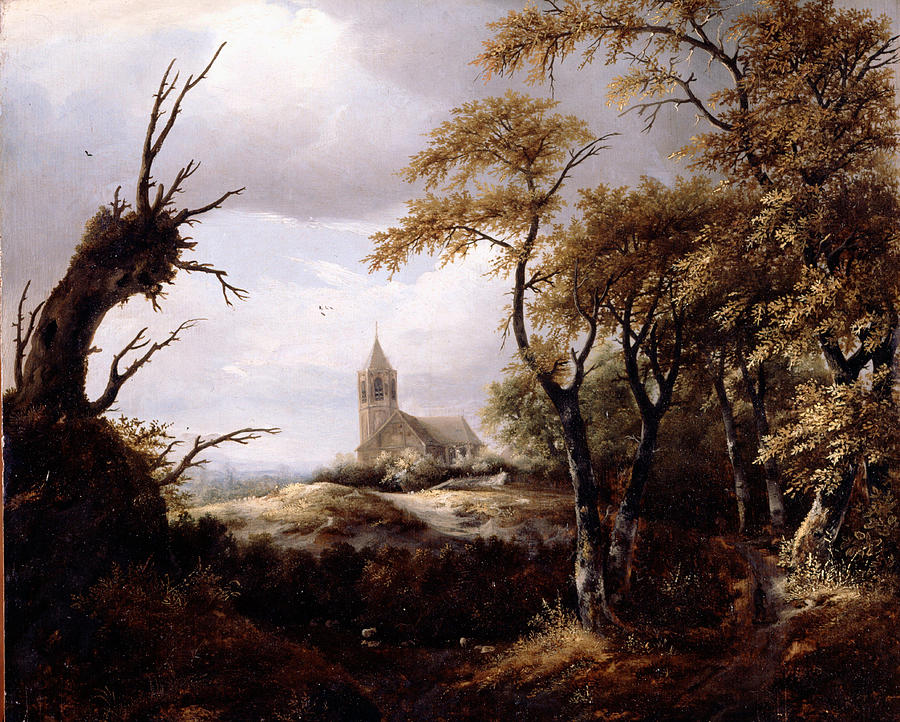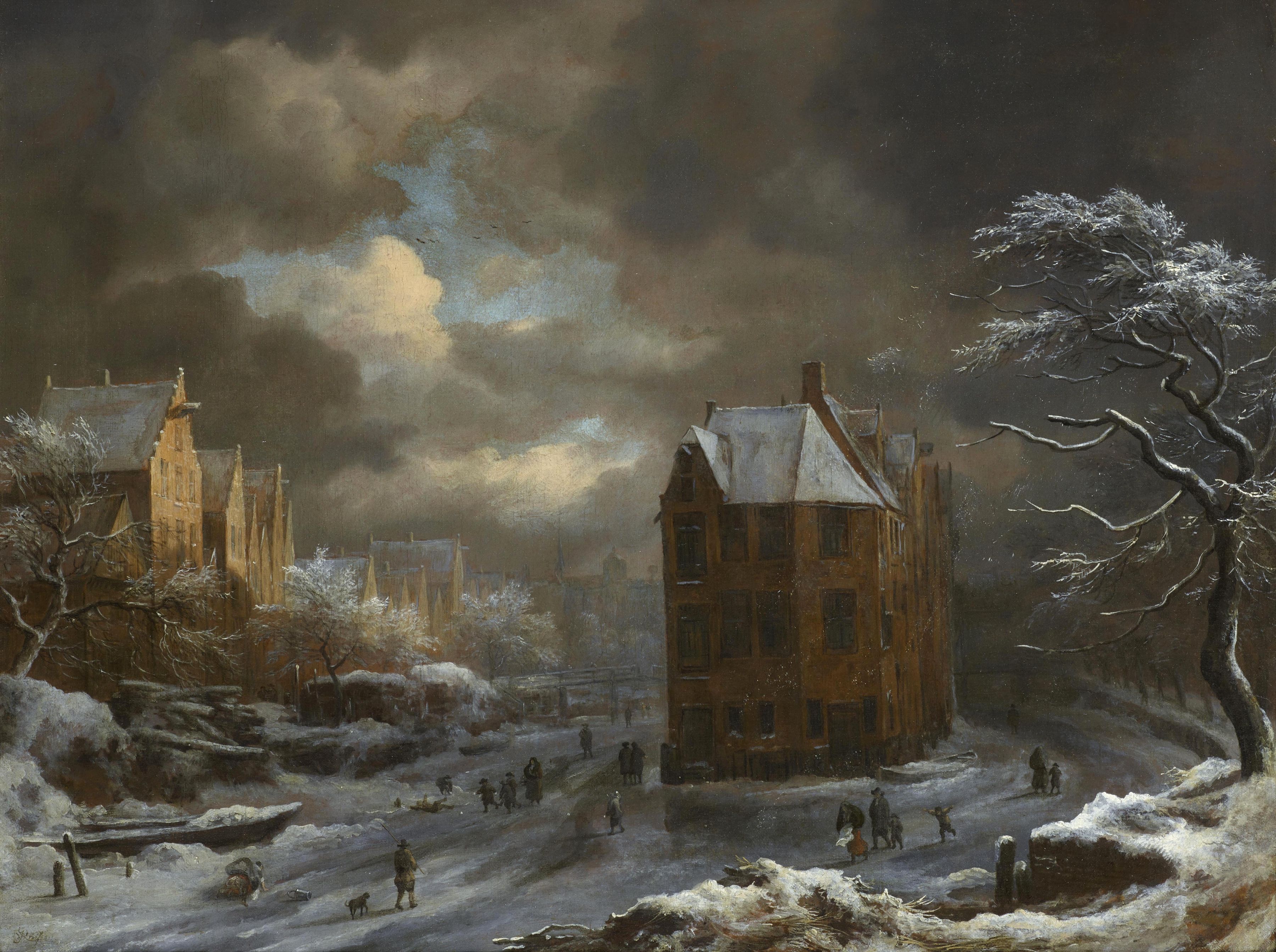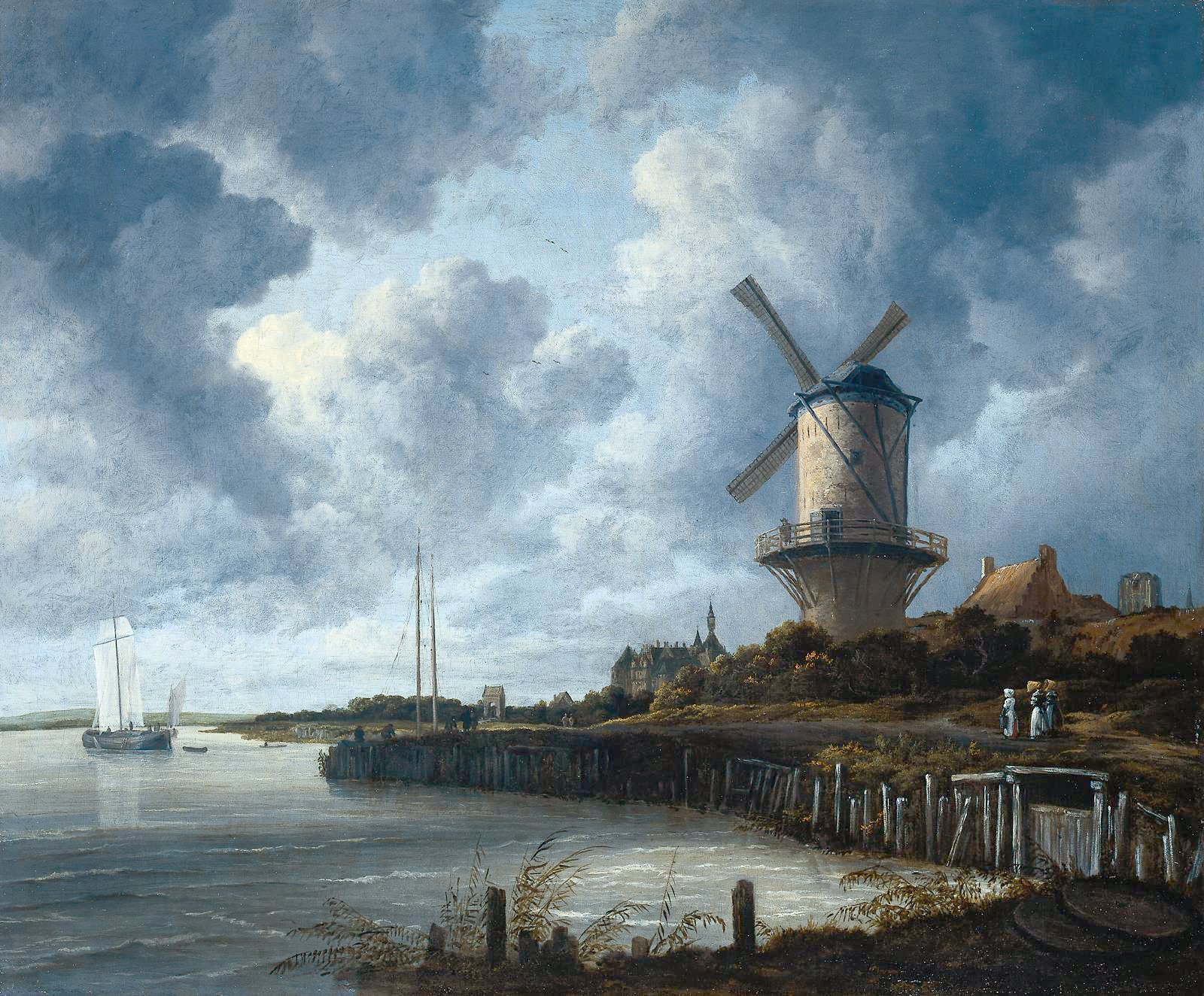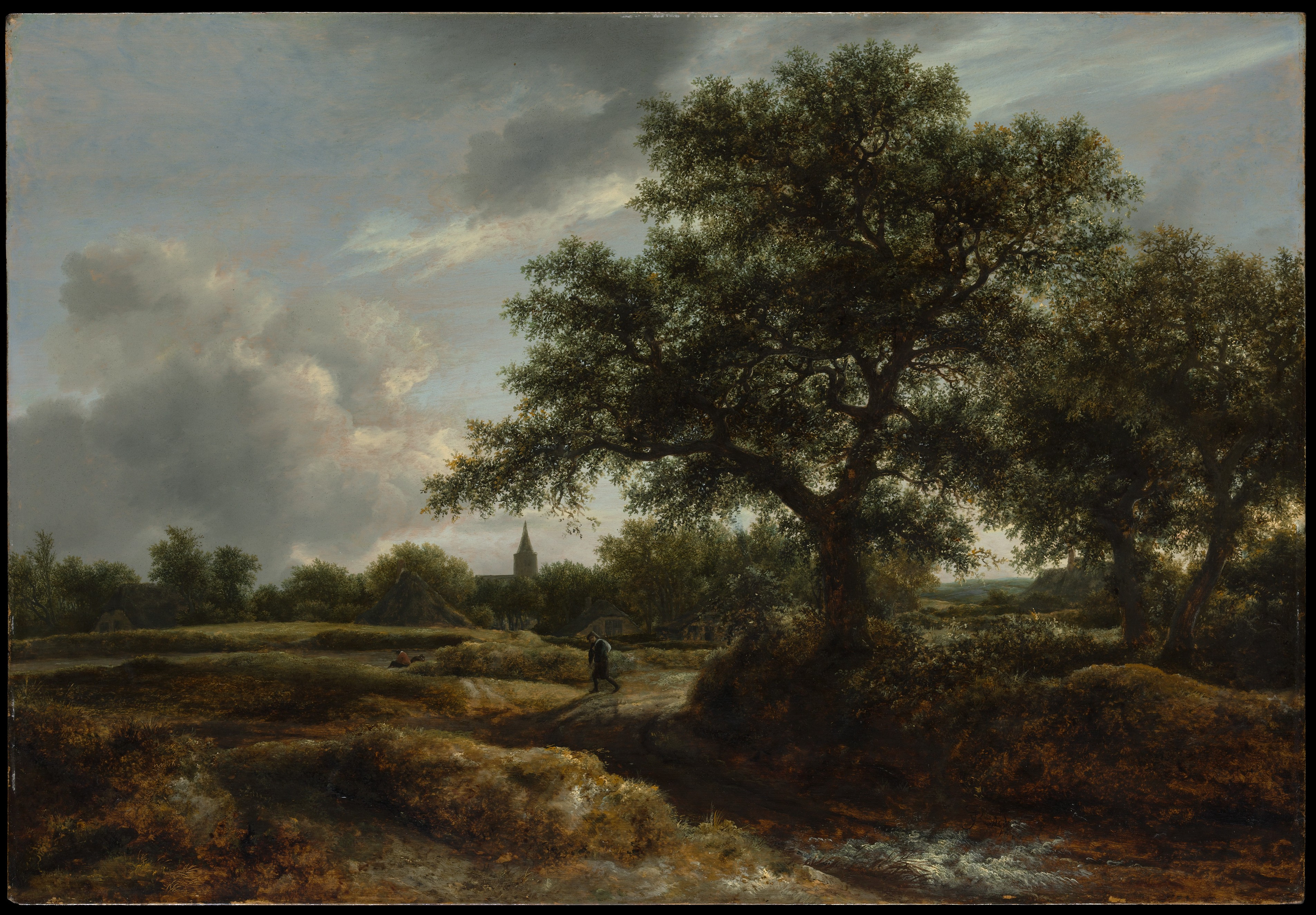
Landscape with Ruins Painting Jacob van Ruisdael Oil Paintings
Jacob van Ruisdael used a form of impasto - a thick type of paste that creates astounding lighting affects and reflections. When applied thickly, it can show the intensity of the brush stroke which makes expression easier. Impasto also has the wonderful effect of standing out on the canvas, creating a three-dimensional aspect..
.jpg)
Jacob van Ruisdael (Haarlem 1628/91682 Amsterdam) , A winter landscape with a view of a town
Jacob Isaaksz van Ruisdael, The Jewish Cemetery, 1654 or 1655, oil on canvas, 142.2 × 189.2 cm (Detroit Institute of Arts) Standing in front of Jacob van Ruisdael's Jewish Cemetery at the Detroit Institute of Arts, a visitor is surrounded by paintings made by Jacob and other members of the famous Ruisdael family of Dutch landscape painters.

Jacob van Ruisdael Dutch artists, Landscape paintings, Amazing paintings
Art scholars don't consider this painting to be a masterpiece, or even one of the artist's best works. That's not too surprising given who the painter is: Jacob van Ruisdael is considered by many to be the greatest landscape artist in Holland's history. What may be unexpected is that Van Ruisdael was only 18 or so when he finished this.

Pura Kastigá JACOB VAN RUISDAEL. DELICIOSA PINTURA DE PAISAJES.
Metropolitan Museum of Art Bulletin 20 (June 1925), p. 142, ill. p. 148, erroneously as by Salomon van Ruysdael. Jakob Rosenberg. Jacob van Ruisdael. Berlin, 1928, pp. 85, 117, no. 215, as "Wasserfall". Josephine L. Allen and Elizabeth E. Gardner. A Concise Catalogue of the European Paintings in The Metropolitan Museum of Art. New York, 1954, p.

Jacob van Ruisdael elsewhere Landscape paintings, Landscape art, Dutch golden age
Jacob Isaacksz van Ruisdael was the most versatile 17th-century Dutch landscape painter. His landscapes are characterized by an exceptional diversity of subjects and astonishing craftsmanship. { { 1 | leadingZero }} Jacob was born in Haarlem into an artistic milieu.

Landscape with a Church Painting by Jacob van Ruisdael Pixels
Jacob van Ruisdael, the foremost Dutch landscape artist of the late 17th century, mastered a wide variety of subjects—from waterfalls to dunes to woodlands to sweeping panoramas.

Jacob van Ruisdael Artworks Agnews Gallery
'Jacob van Ruisdael, one of the great Dutch landscape painters of the 1600s, explored a range of landscape motifs in his work, including forest scenes, seascapes, beach scenes, and panoramic landscapes. In Bridge with a Sluice, Ruisdael made an ordinary object monumental by making it larger than all the other elements in the painting, thereby.

FileJacob van Ruisdael Landscape with a millrun and ruins Google Art Project.jpg
Jacob van Ruisdael Biography Full Name: Jacob Isaakszoon van Ruisdael Short Name: Ruisdael Date of Birth: 1628 Date of Death: 14 Mar 1682 Focus: Paintings Mediums: Oil, Wood, Other Subjects: Landscapes Art Movement: Baroque Hometown: Haarlem, Netherlands Living In: Amsterdam, Netherlands Jacob van Ruisdael Biography Page's Content Introduction
.jpg)
Jacob van Ruisdael (Haarlem 1628/91682 Amsterdam) , A path on a wooded rise, Haarlem in the
Dimensions: 30 x 43 in. (76.2 x 109.2 cm) Classification: Paintings Credit Line: Bequest of Adele L. Lehman, in memory of Arthur Lehman, 1965 Accession Number: 65.181.10 Learn more about this artwork European Paintings at The Met

Jacob van Ruisdael Frans Hals Museum
Jacob Isaacksz. van Ruisdael. The Haarlem-born painter Jacob van Ruisdael (ca. 1628-1682) began to paint at an early age. His first work dates from 1646. Ruisdael probably had lessons from his father, but his uncle, the artist Salomon van Ruysdael, must also have been a great influence on the young painter. As well as being a painter, Ruisdael.

Art Now and Then Jacob van Ruisdael
Wheat Fields. Jacob van Ruisdael Dutch. ca. 1670. On view at The Met Fifth Avenue in Gallery 615. Twenty-seven views of fields by Ruisdael survive today. In this celebrated example, the artist used the building blocks of land, sky, and sea to create an imposing vision of cultivated nature. On the road before us, a man with a traveler's pack.

Jacob van Ruisdael, View of Haarlem with Bleaching Grounds, c. 1670 1675. On view in the
Jacob van Ruisdael: A Complete Catalogue of His Paintings, Drawings, and Etchings, a catalog raisonné with +/- 700 paintings, 130+ drawings, and 13 etchings by Seymour Slive, Yale University Press, New Haven, CT, 2001

Jacob van Ruisdael "Two Watermills and an Open Sluice" (1653) in 2020 Landscape paintings
Jacob van Ruisdael and the Perception of Landscape. New Haven, 1991, p. 226 n. 17, as "Hilly Woodland with Waterfall". Katharine Baetjer. European Paintings in The Metropolitan Museum of Art by Artists Born Before 1865: A Summary Catalogue. New York, 1995, p. 331, ill. Seymour Slive.

Jacob van Ruisdael Landscape with a Village in the Distance The Metropolitan Museum of Art
Jacob van Ruisdael, (born 1628/29, Haarlem, Netherlands—died March 10, 1682, Amsterdam), Baroque artist often regarded as one of the greatest Dutch landscape painters. His subjects and style varied throughout his career, leading to a dynamic oeuvre that comprises around 700 paintings, 100 drawings, and several etchings.

Jacob van Ruisdael The Art Institute of Chicago
Jacob van Ruisdael 1628/9? - 1682 Jacob van Ruisdael was one of the most famous landscape painters of 17th-century Holland, and the foremost exponent of the classical phase of Dutch landscape painting. He was able to create a poetic and sometimes brooding or tragic mood in his landscapes.
.jpg)
Jacob van Ruisdael (Haarlem 1628/91682 Amsterdam) , A wooded river landscape with figures
Jacob Isaaksz van Ruisdael, The Jewish Cemetery, 1654 or 1655, oil on canvas, 142.2 × 189.2 cm (Detroit Institute of Arts) Gallery view with Ruisdaels, Detroit Institute of Arts (photo: Dr. Theresa Kutasz Christensen) The first thing the viewer might notice is how large the painting is. The Jewish Cemetery is double or triple the size of most.